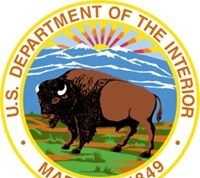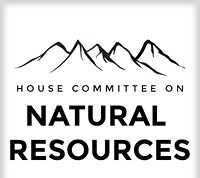Deputy Secretary Mike Connor Tours Horicon Marsh, Highlights Importance of Land and Water Conservation Fund
International Wetland Shines from Land and Water Conservation Fund
MILWAUKEE, WISC – (RealEstateRama) — Deputy Secretary of the Interior Mike Connor made a special visit to Horicon National Wildlife Refuge in Wisconsin today to learn more about the importance of the federally protected Horicon Marsh and the neighboring state lands and waters.
Horicon National Wildlife Refuge encompasses the northern two-thirds of the 33,000 acre Horicon Marsh and is one of the largest intact freshwater wetlands in the United States. As a year-round destination for people from around the globe, visitors can photograph the more than 300 bird species that call this beautiful landscape home, including staging sandhill cranes, tundra swans, whooping cranes, warblers, herons, shorebirds, and American white pelicans and listen to the calls of gray tree frogs.
“Horicon Marsh is a conservation success story, with state, federal and grassroots, citizen organizations coming together to protect this ecological centerpiece,” said Deputy Secretary Connor. “The Land and Water Conservation Fund has helped to ensure important sites across Wisconsin, like Horicon Marsh, Lake Geneva and Oak Creek, are preserved for the enjoyment of future generations. It is critical that the Land and Water Conservation Fund be permanently reauthorized to build on these efforts.”
“Horicon Marsh is a jewel in the heart of the Midwest,” notes Horicon National Wildlife Refuge Complex Project Leader Steve Lenz. “In two decades that I’ve been working in southcentral and southeast Wisconsin, I can say that with each tract of land that we acquire and restore, the benefits to wildlife and people grow exponentially.”
Last month, Secretary of the Interior Sally Jewell announced nearly $95 million will be distributed from the Land and Water Conservation Fund to all 50 states, U.S. territories, and the District of Columbia to support conservation and recreation projects in local communities, of which, $1.7 million were designated for Wisconsin. The funds, which are generated out of a portion of the lease revenue from offshore oil and gas development, support state-identified and community-supported projects that create jobs, contribute to local economies and grow outdoor recreational opportunities in virtually every county across the country, including places like Horicon National Wildlife Refuge. Since the Land and Water Conservation Fund was established, the refuge and its surrounding federal lands and waters in Wisconsin, have used $7.8 million to acquire and restore 9,270 acres.
The Land and Water Conservation Fund was established by Congress in 1965 to ensure access to outdoor recreation resources for present and future generations, and to provide money to federal agencies and state and local governments to purchase land, water, and wetlands for the benefit of all Americans. Funds are awarded through federal matching grants that leverage public and private investment and enable state and local governments to create, develop, or enhance everything from urban parks to state wildlife management areas to soccer fields. The funds also provide the public with access to rivers, lakes, and other water resources, and permanently conserve these areas for outdoor recreational use and enjoyment. A recent analysis of the Land and Water Conservation Fund found that every $1 invested in land acquisition generated a $4 return on investment for communities.
Only once in the past 50 years has Congress appropriated LWCF funding at the fully authorized level of $900 million. President Obama’s 2017 budget request includes a legislative proposal to establish mandatory funding for LWCF programs, with full funding at $900 million. On September 30, 2015, the date Congress allowed the Fund to expire temporarily for several months, Jewell urged Congress to reauthorize the LWCF and to pass President Obama’s proposal to guarantee permanent full funding of $900 million a year that Congress authorized under the original law. Congress provided a short-term renewal of three years for LWCF in the fiscal year 2016 Omnibus Appropriations Act. Chronic uncertainty and underfunding have made it increasingly challenging for local, state and federal partners to use this important conservation tool.
Learn more about Horicon National Wildlife Refuge: http://www.fws.gov/midwest/news/BdayHoricon.html
Horicon images:
- Horicon National Wildlife Refuge. Photo by Courtney Celley/USFWS.
- Eastern Gray Treefrog at Horicon National Wildlife Refuge. Photo by Rachel Samerdyke/USFWS.
- Birding along Horicon National Wildlife Refuge boardwalk. Photo by Courtney Celley/USFWS.
- Full selection of Horicon NWR
Contact:














